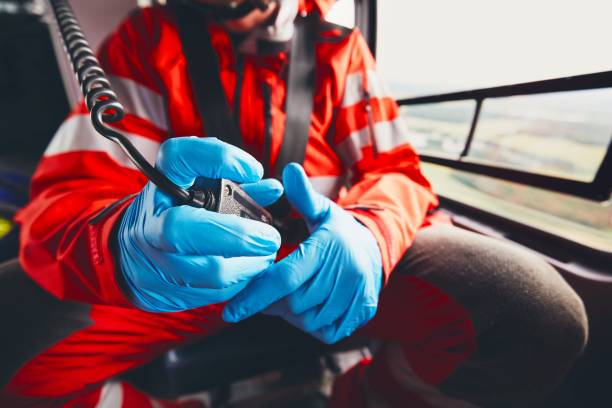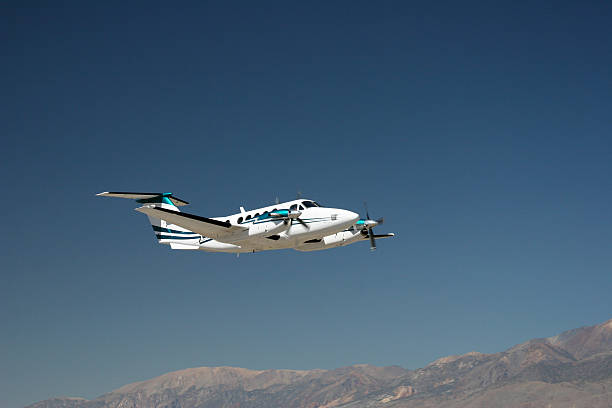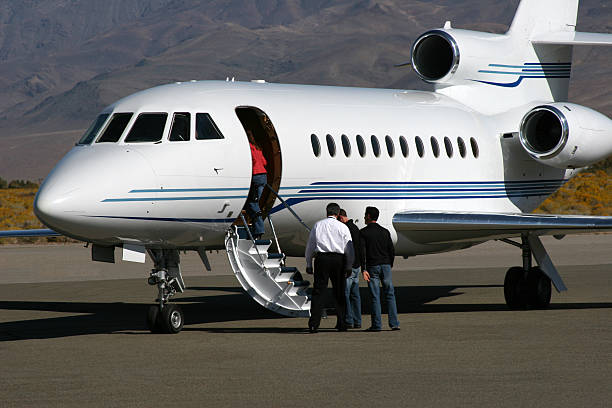How ParaFlight Revolutionizes Organ Transplant Logistics

Introduction
Every 10 minutes, someone is added to the national transplant waiting list, and 17 people die daily waiting for an organ transplant. In this race against time, every second counts, and the logistics of organ transportation can mean the difference between life and death. ParaFlight has emerged as a game-changing solution, providing specialized medical transport services that support transplant surgeons and hospitals in their critical mission to save lives.
The Critical Challenge of Organ Transportation
Time-Sensitive Nature of Organ Transplants
Organ transplantation is one of medicine's most time-sensitive procedures. Once an organ is harvested, the clock starts ticking:
- Hearts: Must be transplanted within 4-6 hours
- Livers: Viable for 12-24 hours
- Kidneys: Can survive 24-36 hours
- Lungs: Must be transplanted within 4-6 hours
- Pancreas: Viable for 12-24 hours
These narrow windows create immense pressure on medical teams and transportation providers. According to the United Network for Organ Sharing (UNOS), approximately 39,000 organ transplants are performed annually in the United States, with each requiring precise coordination and rapid transport.
Geographic Challenges
The organ allocation system doesn't respect geographical boundaries. A heart harvested in Miami might save a patient in Seattle, while a liver from Denver could be the answer for someone in New York. This geographical dispersion creates complex logistical challenges that traditional ground transportation simply cannot address efficiently.
ParaFlight's Comprehensive Solution
Specialized Medical Aircraft Fleet
ParaFlight operates a diverse fleet of medical aircraft specifically configured for organ transport missions. Their fleet includes:
- Turboprop Aircraft: Ideal for regional transport missions under 500 miles
- Light Jets: Perfect for mid-range flights with rapid deployment capabilities
- Heavy Jets: Designed for long-distance, coast-to-coast organ transport
- Helicopters: Essential for urban hospital-to-hospital transfers and challenging terrain access
Each aircraft is equipped with specialized medical equipment, including:
- Advanced life support systems
- Temperature-controlled organ preservation units
- Emergency medical equipment
- Redundant communication systems
- GPS tracking for real-time monitoring
24/7 Availability and Rapid Response
ParaFlight maintains round-the-clock operations with dedicated flight crews and aircraft on standby. Their average response time from initial contact to wheels-up is under 60 minutes, significantly faster than commercial alternatives. This rapid response capability is crucial when considering that every hour of delay can reduce transplant success rates by 5-10%.
Specialized Medical Crew Training
All ParaFlight crew members undergo extensive training in:
- Organ handling and preservation protocols
- Emergency medical procedures
- Time-critical mission management
- Communication with transplant teams
- Regulatory compliance for medical transport
Supporting Transplant Surgeons
Seamless Coordination
ParaFlight works directly with transplant surgeons to ensure seamless coordination throughout the entire transport process. Their services include:
Pre-Transport Planning:
- Flight route optimization based on weather and air traffic
- Coordination with organ procurement organizations (OPOs)
- Real-time communication with surgical teams
- Backup flight planning for contingencies
During Transport:
- Continuous monitoring of organ condition
- Real-time updates to receiving hospitals
- Direct communication channels with surgical teams
- GPS tracking for accurate arrival time estimates
Post-Transport Support:
- Immediate debriefing with medical teams
- Documentation for quality assurance
- Follow-up coordination for return flights if needed
Reducing Surgeon Stress and Workload
By handling all aspects of organ transportation, ParaFlight allows surgeons to focus on what they do best – performing life-saving surgeries. This delegation of responsibility reduces stress on medical teams and improves overall patient outcomes.
Dr. Sarah Mitchell, a cardiac transplant surgeon at a major medical center, notes: "ParaFlight's reliability and professionalism have transformed our transplant program. We can focus on patient care knowing that organ transport is in capable hands."
Hospital Partnership Benefits
Cost-Effective Solutions
ParaFlight offers hospitals cost-effective alternatives to maintaining their own medical transport capabilities. The average cost of operating a hospital-owned medical aircraft exceeds $3 million annually, while ParaFlight's on-demand services provide similar capabilities at a fraction of the cost.
Regulatory Compliance
Navigating the complex web of regulations governing medical transport requires specialized expertise. ParaFlight ensures full compliance with:
- FAA regulations for medical transport
- Department of Transportation requirements
- State and federal medical transport laws
- International transport regulations for cross-border missions
- HIPAA compliance for patient information protection
Quality Assurance Programs
ParaFlight maintains rigorous quality assurance programs that include:
- Regular aircraft maintenance and inspection
- Crew training and certification programs
- Performance monitoring and improvement
- Incident reporting and analysis
- Continuous improvement initiatives
Technology Integration
Real-Time Tracking Systems
ParaFlight's advanced tracking systems provide hospitals and surgeons with real-time visibility into organ transport missions. Features include:
- GPS tracking with minute-by-minute updates
- Estimated arrival time calculations
- Weather monitoring and route adjustments
- Communication logs and documentation
- Mobile app access for key stakeholders
Data Analytics and Reporting
The company provides comprehensive analytics to help hospitals optimize their transplant programs:
- Transport time analysis
- Success rate correlations
- Cost-benefit analysis
- Performance benchmarking
- Predictive modeling for future needs
Case Studies and Success Stories
Case Study 1: Cross-Country Heart Transport
In 2023, ParaFlight successfully transported a heart from Los Angeles to Boston in under 5 hours, including ground transport time. The mission required coordination across multiple time zones and weather systems, demonstrating the company's ability to handle complex logistics under extreme time pressure.
Case Study 2: Multi-Organ Procurement Mission
ParaFlight coordinated a complex multi-organ procurement mission involving the transport of a liver to Chicago, kidneys to Atlanta, and a heart to Phoenix – all from a single donor in Denver. The mission required three separate aircraft and precise timing to ensure all organs arrived within their viability windows.
Case Study 3: Emergency Weather Rerouting
During a severe weather event, ParaFlight successfully rerouted a kidney transport mission, adapting to changing conditions while maintaining the cold ischemia time within acceptable limits. The flexibility and expertise of their flight operations team ensured the transplant proceeded as scheduled.
Impact on Patient Outcomes
Improved Transplant Success Rates
Hospitals partnering with ParaFlight report improved transplant success rates due to:
- Reduced cold ischemia time
- Improved organ preservation during transport
- More reliable delivery schedules
- Better coordination between procurement and transplant teams
Expanded Geographic Access
ParaFlight's services enable hospitals to access organs from a wider geographic area, increasing the pool of available organs for their patients. This expanded access is particularly beneficial for patients with rare blood types or those requiring specialized matching criteria.
Reduced Organ Wastage
According to UNOS data, approximately 3,500 organs are discarded annually due to various factors, including transportation challenges. ParaFlight's reliable transport services help reduce organ wastage by ensuring timely delivery within viability windows.
Future Innovations
Drone Technology Integration
ParaFlight is exploring the integration of drone technology for short-distance organ transport, particularly for urban hospital-to-hospital transfers. This technology could reduce transport times and costs while maintaining the high standards of care required for organ transport.
Artificial Intelligence and Predictive Analytics
The company is developing AI-powered systems to predict transport needs, optimize flight routes, and improve resource allocation. These systems will help hospitals better plan their transplant programs and reduce emergency transport costs.
Telemedicine Integration
Future services may include telemedicine capabilities, allowing transplant surgeons to monitor organ condition during transport and provide real-time guidance to transport teams.
Regulatory Landscape and Compliance
Federal Aviation Administration (FAA) Requirements
ParaFlight maintains strict compliance with FAA regulations governing medical transport operations, including:
- Part 135 operating certificates for commercial operations
- Specialized medical transport equipment certifications
- Crew training and certification requirements
- Maintenance and inspection protocols
- Safety management systems
Department of Transportation (DOT) Regulations
The company adheres to DOT regulations for medical transport, ensuring proper documentation, safety protocols, and interstate commerce compliance.
State and Local Requirements
ParaFlight navigates varying state and local regulations across different jurisdictions, ensuring compliance with medical transport requirements in all operating areas.
Economic Impact
Cost Savings for Healthcare Systems
ParaFlight's services generate significant cost savings for healthcare systems through:
- Reduced need for in-house transport capabilities
- Lower overhead costs compared to maintaining dedicated aircraft
- Improved efficiency in transplant programs
- Reduced organ wastage and associated costs
Revenue Generation
By enabling more transplants and improving success rates, ParaFlight helps hospitals generate additional revenue while providing better patient care.
Economic Multiplier Effects
The company's operations support jobs in aviation, healthcare, and related industries, creating positive economic impacts in the communities they serve.
Conclusion
ParaFlight has established itself as an essential partner for transplant surgeons and hospitals, providing specialized medical transport services that save lives and improve patient outcomes. Through their comprehensive approach to organ transportation, advanced technology integration, and unwavering commitment to quality, ParaFlight continues to revolutionize the field of transplant logistics.
As the demand for organ transplants continues to grow – with over 106,000 Americans currently on waiting lists – services like ParaFlight become increasingly critical. Their ability to provide reliable, efficient, and cost-effective transport solutions enables healthcare providers to focus on their core mission: saving lives through the miracle of organ transplantation.
The partnership between ParaFlight and the transplant community represents more than just a business relationship – it's a collaboration that directly impacts families, communities, and the broader healthcare ecosystem. As technology continues to evolve and new challenges emerge, ParaFlight remains committed to innovation and excellence in serving the transplant community.
For hospitals and transplant programs seeking to improve their logistics capabilities and patient outcomes, ParaFlight offers a proven solution that combines cutting-edge technology, specialized expertise, and unwavering dedication to the critical mission of organ transplantation.
References
- United Network for Organ Sharing (UNOS) - Organ Transplant Statistics: https://unos.org/data-reports/
- U.S. Department of Health and Human Services - Organ Donation and Transplantation: https://www.organdonor.gov/learn/organ-donation-statistics
- Federal Aviation Administration - Medical Transport Regulations: https://www.faa.gov/about/office_org/headquarters_offices/avs/offices/aam/ame/guide/
- American Journal of Transplantation - Organ Preservation and Transport: https://onlinelibrary.wiley.com/journal/16006143
- Association of Organ Procurement Organizations (AOPO) - Best Practices: https://www.aopo.org/















